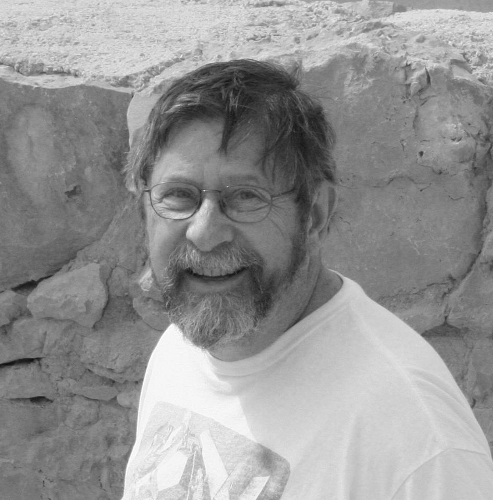 Robert T. Rood. Photo courtesy of Martha Snell.
Robert T. Rood. Photo courtesy of Martha Snell.
Robert T. Rood
Contributed by John Hawley
Bob Rood, born in 1942, was the oldest of five children and along with his siblings demonstrated an early interest in science and experimentation. He graduated with a BS in Physics from North Carolina State University in 1964. He received an NSF graduate Fellowship to pursue a degree in Physics at the Massachusetts Institute of Technology, where he received his PhD in 1969, working with Professor Icko Iben, Jr. on a thesis entitled A Theoretical Investigation of the Structures of Globular Cluster Stars. After graduation he continued at MIT as a Research Associate until 1971 after which he was a postdoctoral Research Fellow at the California Institute of Technology with William Fowler. While at Caltech Bob developed his lifelong interest in stellar nucleosynthesis and, in particular, the isotope Helium 3 and the role it plays in the Universe. Bob joined the Astronomy faculty at the University of Virginia in 1973 and remained on the faculty until his retirement in 2011.
Much of Bob's research career was devoted to stars and stellar structure, with particular emphasis on late stellar evolution, stellar abundances and nucleosynthesis. He was concerned with the lives of "ordinary stars" because of their potential to provide a test of stellar evolution theory at the most fundamental level. A portion of this work had cosmological implications, including efforts to determine the ages of the oldest globular cluster stars. Bob worked throughout his career on abundance measurements of Helium-3, a trace element produced during the big bang. Since stars also produce (and destroy) 3Helium+, the challenges for using it as a measure of cosmic density were daunting, requiring careful consideration of many processes. The observational challenges were also great, requiring pushing existing techniques to their limit. The eventual outcome of this work was the establishment of a primordial abundance of Helium-3 as one of the observational pillars of today's "Concordance" model of the Universe. Interesting, the last observations on the Green Bank 140-ft were made by Bob and colleagues, in an attempt to study 3He+ hyperfine line.
Another of Bob's long term interests was the question of extra-terrestrial life as considered from a scientifically rigorous, and suitably skeptical point of view. In 1981 Bob and James Trefil co-wrote the well-received book Are We Alone? The possibility of extraterrestrial civilizations, described by one reviewer as providing "engaging counter arguments to the prevailing inclination to believe in extraterrestrial intelligences."
Bob died in 2011.
Modified on Tuesday, 17-Dec-2019 10:49:10 EST by Ellen Bouton, Archivist (Questions or feedback)
|
![[IAU logo]](iau_wb_thumb.jpg)
![[URSI logo]](URSI-logo-thumb.jpg)
![[Karl Jansky at his antenna]](jansky_photo_02_thumb.jpg)
![[Reber's Wheaton antenna]](Reber_Telescope_Wheaton_thumb.jpg)
![[Dover Heights]](Dover_Heights_02_thumb.jpg)
![[4C telescope]](GB61-195_4C_telescope_thumb.jpg)
![[Ewen and horn antenna]](ewen_horn1s.jpg)
![[Dwingeloo, 1956]](Dwingeloo-1956-thumb.jpg)
![[Jocelyn Bell Burnell and Cambridge antenna used in pulsar discovery]](burnell2_thumb.jpg)
![[Lovell Telescope at Jodrell Bank]](site_1594_0001-500-334-20180316163019-thumb150.jpg)
![[Wilson, Penzias, and Bell Labs horn antenna]](wilson-penzias-horn_thumb.jpg)
![[6-m Millimeter Radio Telescope in Mitaka, Japan]](6m-thumb.jpg)

